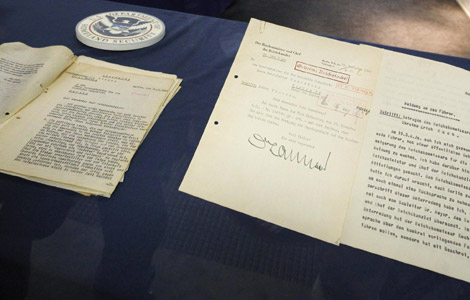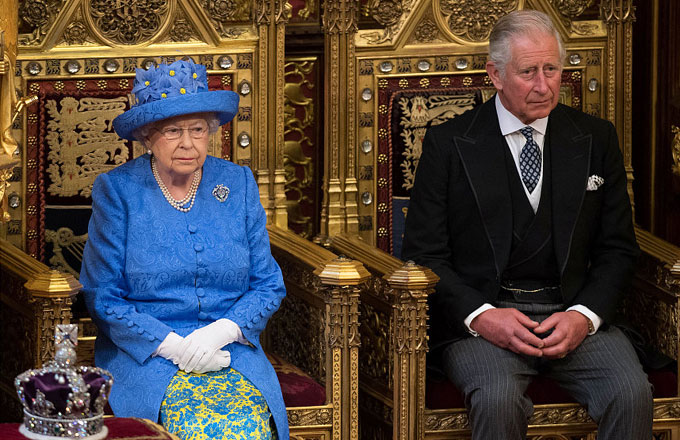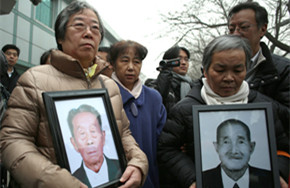Long-lost diary of top Hitler aide found
|
 |
|
Papers from the recovered diary of Nazi leader Alfred Rosenberg are displayed during a news conference at the Department of Homeland Security office in Wilmington, Delaware, June 13, 2013. [Photo/Agencies]
|
WILMINGTON - U.S. officials on Thursday unveiled the 400-page diary of Alfred Rosenberg, a top aide to Adolf Hitler, who oversaw the genocide against Jews and others during World War II.
The diary disappeared after the Nuremberg trials in 1946, sparking a nearly 70-year hunt that ended on April 5 in the upstate New York town of Lewiston, at the home of an academic named Herbert Richardson.
The diary pages, hand-written in German and not yet completely translated into English by scholars, offers a broader look at the Third Reich's policies and practices, as well as an unvarnished account of a Nazi leader's thoughts, authorities said at a news conference on Thursday.
"These 400 pages are a window into the dark soul of one of the great wrongs in human history," said John Morton, director of U.S. Immigrations and Customs Enforcement, which investigates cases of missing cultural property. "It's significant because, as time marches on, there are fewer living witnesses of what happened during the Holocaust. We still don't know the full extent."
Pages of the diary, which will eventually be turned over to the U.S. Holocaust Memorial Museum in Washington, D.C., were shown to reporters, including one entry dated April 1941.
Rosenberg describes walking alone after "an important meeting" with Hitler, who told him: "Your great hour has come."
Museum senior adviser Henry Mayer, who had been searching for the diary for 17 years, noted Rosenberg did not elaborate in the entry.
"What Hitler described was so great, he couldn't put it down," Mayer told reporters.
U.S. officials have long suspected that a prosecutor, Robert Kempner, smuggled the diary back to the United States after the Nuremberg trial.
Born in Germany, Kempner fled to America in the 1930s to escape the Nazis, only to return for post-war trials. He is credited with helping reveal the existence of the Wannsee Protocol, the 1942 conference during which Nazi officials met to coordinate the extermination of the Jews, which they termed "The Final Solution."
Kempner cited a few Rosenberg diary excerpts in his memoir and in 1956 a German historian published entries from 1939 and 1940. But the bulk of the diary never surfaced.
After his death in 1993, heirs to his estate agreed to forfeit his possessions to the U.S. holocaust museum, but that agreement hit road blocks and the diary was never found.
However in 1999, when cleaning out Kempner's home in suburban Philadelphia, a man found 40 boxes of documents, including papers outlining the Nazi's "aggressive war against and the plundering, spoliation and the economic exploitation of the Soviet Union by the Nazi regime," according to a 2003 court filing. But the diary was not among the materials.
"That was what we were looking for, that's what was so frustrating," said Robert Wittman, the founder of the FBI's Art Crime Team, and now a private art security consultant.
In recent months, Wittman and his son, Jeffrey, helped ICE locate the diary in New York.
The diary offers Rosenberg's recollections from the spring of 1936 to the winter of 1944, according to an analysis by the Holocaust museum. Most entries are written in Rosenberg's looping cursive, some on paper torn from a ledger book and others on the back of official Nazi stationery, according to a U.S. government analysis obtained by Reuters.
"Although it is a reminder of a dark time, the Rosenberg Diary is important to our understanding of history," said U.S. Attorney Charles M. Oberly. "Our hope is that it will provide valuable insight to historians."


















